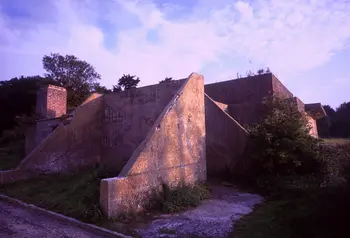£1.5m investment in the East of England’s Second World War heritage

Set to be transformed are the Bawdsey Radar Transmitter Block in Suffolk, home to the world’s first fully operational Radar station, and the de Havilland Aircraft Museum in Hertfordshire, the oldest aviation museum in the UK and dedicated to de Havilland aircraft. These projects will explore the stories of events which changed the lives of an entire nation, and had an impact felt across the world.
Robyn Llewellyn, Head of HLF East of England, said: “The East of England played a vital role during the Second World War, particularly in the field of aviation. Thanks to National Lottery players, HLF has been able to invest in two transformational projects that will ensure many more people in the region and beyond are able to explore these pivotal stories from one of our nation’s most important periods in its history.”
The two projects being supported are:
The Transmitter Block
The Bawdsey Radar Trust has received just over £1.4million from HLF to help deliver a £1.8m project that will conserve the Transmitter Block building on Bawdsey Manor Estate in Suffolk and increase opportunities for people to learn about this pioneering radar site.
Bawdsey Radar Trust will be working to develop ways in which more people can visit the site and understand the importance of the radar heritage that the Transmitter Block represents. These will include new displays within the Block telling the story of radar and its huge significance to the Second World War and beyond.
An important part of the project will be providing opportunities for learning about radar’s fascinating social and scientific history and about how the early work on it at Bawdsey laid the foundation for our current age of electronics. Thus led to inventions such as GPS, accurate weather forecasting, speed safety cameras and even the microwave oven.
Find out more on the Bawdsey Radar website.
The de Havilland Museum in the 21st century
The de Havilland Aircraft Museum at London Colney has received initial support and an award of £62,200 from HLF to develop their £1.5m project to build a new hangar that will better house its outstanding collection of de Havilland aircraft.
The Museum’s new hangar will be linked to the main hangar, which was built in the early 1980s and houses the DH98 Mosquito prototype as well as two other Mosquitos. It will replace the museum’s small original hangar in which its first aircraft, the Mosquito prototype, was initially housed.
The new building will improve conservation and provide a better space to display and tell the story of de Havilland’s aircraft, enabling better access for wider audiences, as well as providing capacity for volunteering, learning and skills development.
Find out more on the de Havilland Museum website.
